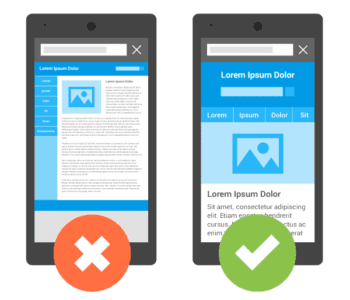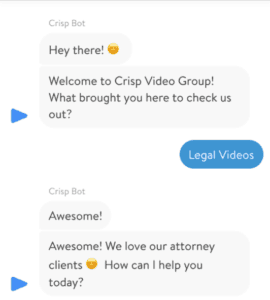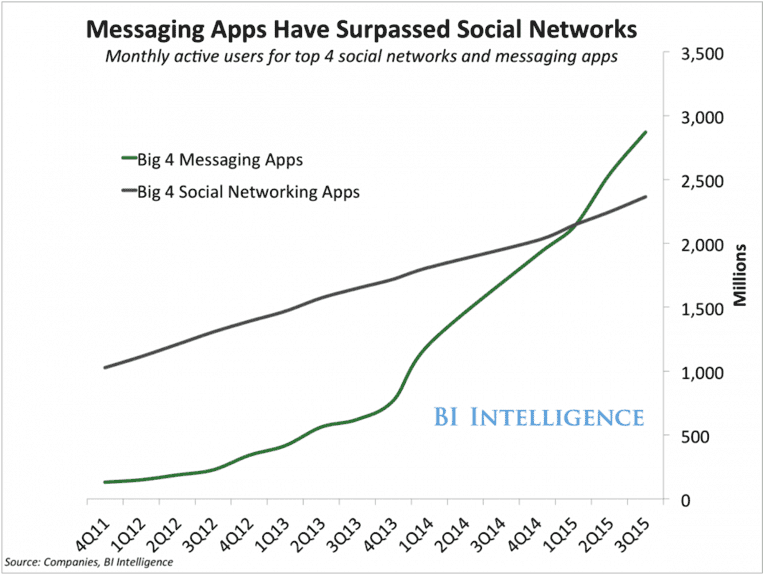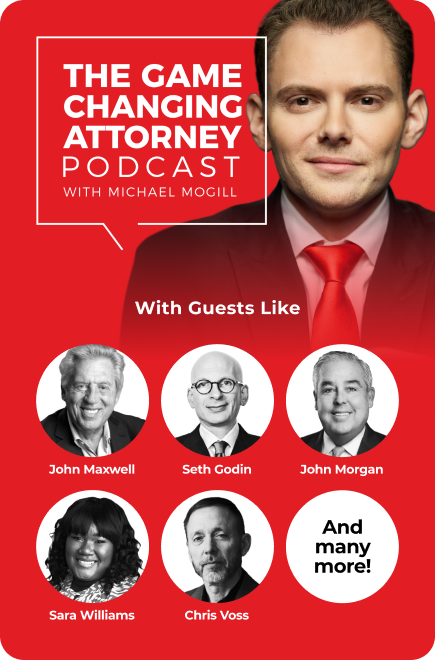The millennial generation is one of the most diverse and complex generations in the nation. Not only is it difficult to connect with them (unless you’re retweeting, #hashtagging, or dishing out avocado toast), it’s also difficult to determine how to convince them to hire you as an attorney.
As easy as it can be to stereotype the millennial generation, you can’t underestimate their ability (or buying power). They outnumber Baby Boomers as the largest living generation, and they make up 35% of the current workforce.
If you’re not adapting your marketing to appeal to the 80 million+ millennials in the US, you’re relying on an outdated method of client interaction and marketing. This means you’re missing out on a valuable segment of the market, which could cost you both cases and clients.
Let’s face it: the legal marketing landscape is changing. If you want to appeal to a younger demographic, you have to identify new ways to get and keep your ideal client’s attention.
Here are 6 strategies you can leverage to connect with (and convert) the millennial demographic.
1. Social Media
1 in 3 millennials feel a stronger connection to brands that have a strong social media presence, and 2 out of 3 millennials use social media to research companies. You can’t deny the power of social media – with more than 1.9 billion users, Facebook alone is an omnipresent platform on which to market your law firm.
The key to a successful social media strategy is consistency and quality content. It also involves optimizing content for each platform. For example, you shouldn’t share Youtube links to Facebook – the algorithm will push your content lower on the newsfeed because it prefers (and promotes) native content.
Meanwhile, Google’s search rankings will promote Youtube videos in the search index, but not Facebook.
It may take a few additional steps, but optimizing your social content for the platform you’re using will increase organic reach, meaning more people will see your posts.
Want to learn more? Download our free eBook, The Social Media Cheat Sheet for Law Firms, here!
You should also make an effort to engage with your audience on social media by responding to comments, answering messages promptly, and liking or sharing user-generated content (such as posts that tag your law firm).
2. Mobile Search Optimization
There are some big changes coming to Google’s search algorithm, which could have a significant impact on your rankings if your firm’s website is not optimized for mobile use.
Google used to crawl and rank websites based on a user’s desktop experience. However, as of this year, Google will start to rank websites based primarily on the mobile experience, with the desktop interface ranked second.
What does that mean for you? It means if your firm’s website isn’t optimized for the mobile-first index, you may start to see a drop in website traffic as Google gives higher SEO placement to sites with a better mobile experience.

Here are some tips for ensuring you don’t lose any site traffic with the rise of the mobile-first index:
- Use Google’s PageSpeed Insights to ensure your website loads properly on mobile (websites that load in under 5 seconds on mobile see 70% longer time on site)
- Consider switching your blog over to Google AMP (Accelerated Mobile Pages) which will allow them to load faster
- Try optimizing keywords for voice search to boost chances of being found on mobile (incorporate long-tail keywords with organic language you would ask Siri/Alexa into your SEO strategy)
Optimizing for the mobile-first index doesn’t have to be a huge endeavor if your firm’s current website has a good user experience and site design. But, if you’ve been considering an update to your online presence, now may be an opportune time to do so.
3. Instant Gratification
When millennials are researching your law firm, they want answers fast. Provide them with instant gratification by making yourself available on all channels. Maintaining a quick response time is a good rule of thumb regardless of the demographic you’re targeting: there is a 10x decrease in the odds of making contact with a lead if you take longer than 5 minutes to respond to them.
However, it isn’t realistic to think that you’ll be sitting by your computer at all hours waiting to respond to incoming messages on every channel. That’s why an automated tool like a chatbot can be a useful tool to screen incoming leads, book appointments, and answer questions without having to physically monitor your messages.

Chatbots represent the first large-scale appearance of AI technology in real life. They’re a low-cost way to improve your response time on both your website and social media (Facebook in particular). With more than one billion people using Facebook Messenger every day, and more than 100,000 bots chatting with those people, there’s a big opportunity to take advantage of.
Want to learn more? Download our free eBook, The Social Media Cheat Sheet for Law Firms, here!

If you’re looking to implement a bot on your website, we’d recommend looking into Drift, which we use at Crisp. Drift allows you to book appointments with leads directly from the chat without manual intervention.
Popular Facebook chatbot builders, which walk you through setting up your sequences and build the bot for you, include ManyChat (which we use at Crisp), Motion AI, Chatfuel, It’s Alive, and more. The chatbot business is booming, so while there are plenty of options for you to choose from, make sure you explore each to find out which works best for your firm, whether it involves:
- Price
- Ease of access
- Integration with other programs
- Required knowledge of coding
The best chatbot platforms offer online tutorials and customer support to make the process easy to use, so before you know it you’ll be on your way to building your own bot!
4. Customer-Centric Content
If you want to produce content that converts, customer-centricity isn’t just a nice to have – it’s a need to have.
While most attorneys know they need content marketing in some capacity, few firms effectively focus their efforts, leading to an abundance of content with a scarcity of results to show for it.
The idea that every piece of content you produce should be designed with the customer in mind is crucial in understanding how some marketing strategies trump others. Your focus should be fixed on the client, not keyword research, SEO benefits, or conversion goals. If you create content that is laser-focused on the needs and desires of your ideal client, optimal results will follow. In fact, 82% of consumers feel more connected to a brand after consuming relevant, engaging content.
If you fear that you’ve been producing content that isn’t customer-centric, you’re not alone: 80% of consumers feel that brands aren’t delivering relevant or targeted messages.
The good news is that this leaves a huge opportunity for you to step in and set yourself apart from the vast expanse of irrelevant content your ideal client is being exposed to on a daily basis.
Here’s a quick beginner’s guide to creating a customer-centric content marketing plan:
- Develop your ideal client persona: If you could wake up every morning and represent the same person again and again, who would they be?
- Identify your ideal client’s needs: With your ideal persona in mind, figure out what content they’re searching for and what problem they’re trying to solve. This will allow you to fine tune your content marketing efforts.
- Create personalized content, distribute, repeat: Create personalized, educational content that adds significant value to your ideal client. Use data and past experience to determine how best to distribute the content, and continue to produce high-quality, valuable content.
Customer-centric content doesn’t just have to take the form of blog posts. Video can also be customer-centric, if you craft a customer-focused message. Rather than talking at length about your own skills and years of experience, you can use video as a medium to answer questions like:
- Why do you enjoy representing your clients?
- How does it feel when you’re able to help a client?
- Why are you uniquely qualified to represent clients in your practice area?
- What experiences have you had that show prospective clients you know what they’re going through?
Attorney Howard Spiva does a great job of incorporating a customer-focused message into his legal brand video. He’s able to simultaneously connect with potential clients through empathy and shared experiences while also boosting perceive brand authority through his client testimonials.
5. Social Proof
The reason social proof is such a powerful influence in the millennial decision-making process is that it allows us to make a relatively informed decision or ease doubt in ambiguous situations — not because we have experience in the situation, but because we’ve trusted the experiences of others to guide in our own decision making.
It’s why online reviews on Google or Amazon are such a powerful selling tool, and why sites like Yelp play a huge role in deciding where we’re going out to dinner this weekend. In fact, 70% of Americans will trust a review from someone they don’t even know, and 63% of Americans are more likely to purchase something from a website that includes customer reviews.
There are four types of social proof you can leverage:
- Expert Proof: Expert proof is when an established authority in your industry recommends your services. When other attorneys in your market refer clients to you, that’s expert proof. When attorneys rate you on Avvo, that’s also expert proof. You can take advantage of this valuable form of social proof by encouraging your colleagues to review you online, and returning the favor to them.
- User Proof: User proof is when your current clients, or those who “use” your services, recommend you to others based on their personal experience with your firm. You should try to incorporate user proof across all channels: Facebook, your website, Google, and more. (Pro Tip: Incorporating video testimonials in your social proof strategy makes your user testimonials more impactful by humanizing the testimony and making it more engaging)
- The wisdom of the crowd: The saying “the more, the merrier” is apt to describe this form of social proof. When a large group of people begins to endorse your brand (i.e. you have 100+ reviews on Google, Facebook, etc.) it has a powerful influence on the decision-making process of potential clients. To put this in perspective: if you were deciding between two identical products on Amazon, and one product had 4,890 5-star reviews, and the second product only had 27, which are you purchasing
- Certification: A certification is a powerful social proof, and within the legal industry, this includes board certifications, advanced degrees, and other forms of continued education that establish you as an expert in your field. You should publicize these certifications on your website, but don’t let them overshadow your client testimonials – potential clients will be swayed by your past client’s words more so than they would by an advanced certification.
You may have already known that client testimonials are an important part of the decision-making process, but it’s also important to realize how those testimonials play into the larger psychological phenomenon known as social proof.
If you begin to place a stronger emphasis on client testimonials in your marketing strategy, display them prominently on your website, and incorporate compelling visual content into your social proof strategy, you will begin to notice higher conversion rates as potential clients reach the end of the decision-making process.
6. Social Responsibility
Social responsibility is the term for any initiatives or philanthropic efforts a company makes to improve environmental or social wellbeing. Millennials feel stronger connections to brands that publicly promote their social initiatives – in fact, 81% of millennials believe that companies or corporations should make public commitments to improve their communities.
Wondering which companies do this well? Look to TOMS or Target. TOMS donates a pair of shoes to someone in need for every pair that’s purchased, and Target has donated well over $1 billion to education initiatives over the past 8 years.
While you don’t have to donate over $1 billion to persuade millennials to believe in your brand, you should make an effort to be involved in your community. Whether it’s sponsoring a local youth team, running your own canned food drive, or hosting community events, it’s important to display civic engagement.

The goal of these strategies is not to make your services the real value —but the experience of working with you as the real value.
So while you don’t need to make a Snapchat for your law firm, you should be focused on consistently providing value to your audience through the content you create. Additionally, make sure that you invest back in your community, and don’t be afraid to promote those civic engagements to your audience.
The millennial demographic can be tricky to understand, but it mostly boils down to authenticity and engagement. Millennials want to support (and work with) companies that engage with them, clearly communicate their story, and commit to providing value to their audience.
Want to learn more? Download our free eBook, The Social Media Cheat Sheet for Law Firms, here!







